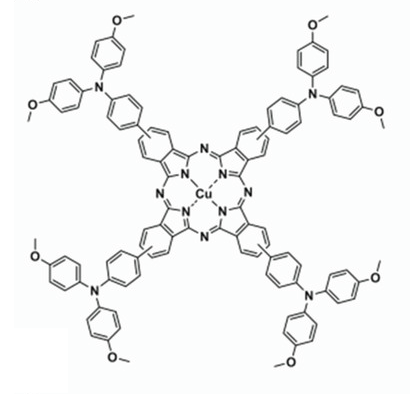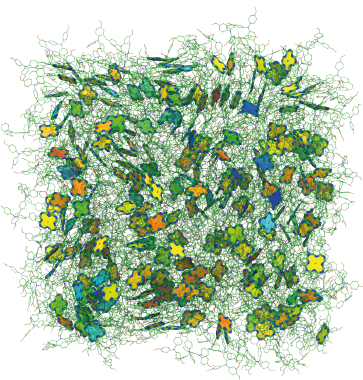
Efficient and direct conversion of sunlight into electricity is definitely attractive. Latest promising technologies for the development of photovoltaics devices are based on perovskite solar cells (PSCs), which exhibit a power conversion efficiency above 20%. PSCs are essentially a sandwich of several ultra-thin (sub-micron) layers of different materials combined together, forming a thin-film. The surface area can reach several square centimeters.
However, PSCs are generally expensive and environmentally unstable. Overall costs are generally related to the need to fabricate special materials, which need several synthetic steps. Other specific properties of materials must also be tuned to reach high efficiency, but this may lead to environmental instability. In particular, the thin layer that is potentially exposed to atmospheric agents, air, humidity, etc. is particularly prone to be degraded by the environment. Protective layers can in principle be added, but this would mean additional costs.
Here comes our idea.
We designed a novel set of molecules, which have all the desired properties for having high power conversion efficiency, and, at the same time, are chemically stable and easy to fabricate. The molecules are based on phthalocyanines, a very versatile class of compounds that has been used already for more than one century. We know that this class of molecules can be used for PCS. But we need some other information.
How can we design the precise structure of the molecule, starting from some basic information and targeting specific properties of the molecular layer? Simulations helped us to predict what is the structure of the molecule that potentially perform bests, among a set of candidate.
By combining different functionalities, we ended up with this molecule:

On the basis of the molecular structure, we performed molecular simulations, modelling the morphology of aggregates in the actual material (thin) layer. We already used this approach in other similar situations [1][2][3]. By using molecular dynamics, we obtained the realistic morphology of this particular layer at an atomistic level of detail, which is clearly not accessible from the experiments. A representative configuration of the molecular packing looks like the image below:

This extreme detail has allowed us to understand how molecules pack together in the real device, a property that is extremely relevant to high power conversion efficiency. We have also analyzed how these property change when we try to engineer molecular structure. For example, simulations told us that some molecular functionalities were more efficient than other. In other words, we could relate the details of the molecular structure to a specific property through computational models and simulations. On the basis of these predictions, the most efficient molecules were synthetized and used in PSCs.
The result was amazing: as expected, these new materials were quite easy to fabricate and 20 times less expensive with respect to standard materials. The overall efficiency of the solar cell, without any special optimization, reached 19.7%, which is very close to record efficiency. In addition, the fabricated cells are super-stable, and can operate in harsh environments, without protection, for several days without losing most of their efficiency:

Several issues still need to be addressed in detail. However, we know that the integration between predictive modelling, targeting realistic systems, and advanced fabrication, can enable big steps forward in solar cell technology. More importantly, we have now everything we need for large-scale fabrication of solar cells based on perovskite materials.
Most of this work was carried out in collaboration with the Southern University of Science and Technology (SUSTech) in Shenzhen, China, and has recently been published on Advanced Energy Materials[4]:
https://onlinelibrary.wiley.com/doi/full/10.1002/aenm.201901019
References
[1] Correlation between gate-dielectric morphology at the nanoscale and charge transport properties in organic field-effect transistors. A Lorenzoni, M Muccini, F Mercuri. RSC Advances 5 (16), 11797-11805, 2015
[2] Theoretical insights on morphology and charge transport properties of two-dimensional N, N′-ditridecylperylene-3, 4, 9, 10-tetra carboxylic diimide aggregates. A Lorenzoni, F Gallino, M Muccini, F Mercuri. RSC Advances 6 (47), 40724-40730, 2016
[3] Spatial and orientational dependence of electron transfer parameters in aggregates of iridium-containing host materials for OLEDs: coupling constrained density functional with molecular dynamics. M Baldoni, A Lorenzoni, A Pecchia, F Mercuri. Physical Chemistry Chemical Physics 20 (45), 28393-28399, 2018.
[4] High‐Performance and Stable Perovskite Solar Cells Based on Dopant‐Free Arylamine‐Substituted Copper (II) Phthalocyanine Hole‐Transporting Materials. Y Feng, Q Hu, E Rezaee, M Li, ZX Xu, A Lorenzoni, F Mercuri, M Muccini. Advanced Energy Materials, 1901019, 2019